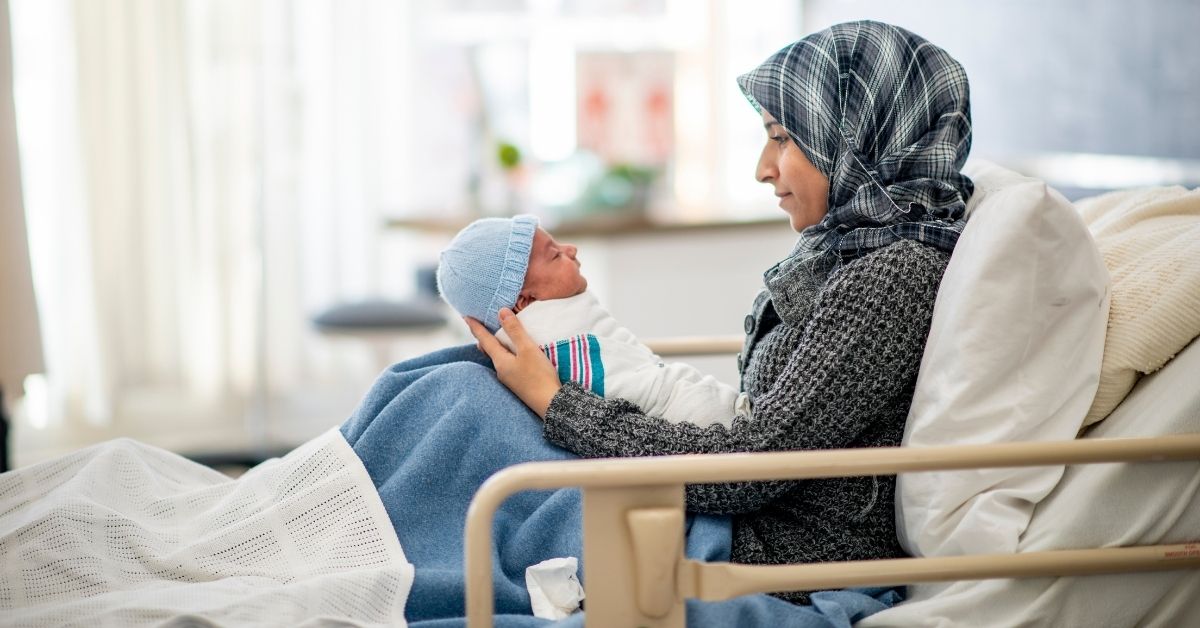
Authors: Mekka Garcia, MD, NYU Grossman School of Medicine
Alison L. Christy, MD, PhD, Providence Pediatric Neurology at St. Vincent Medical Center—Portland, Oregon
Reviewed: August 2022
SUMMARY
Prader-Willi syndrome (PWS) is a genetic disorder. It affects multiple organs. PWS is the most common genetic cause of childhood obesity.
PWS affects about 1 in every 15,000 people worldwide. It has no specific racial or gender predominance.
There is no cure for PWS. However, supportive care is available.
JUMP TO
Disorder Overview
DESCRIPTION
Humans have 46 chromosomes. These include:
- Chromosomes 1 through 22
- The sex chromosomes X and Y
We inherit one copy of chromosomes 1 through 22 from our mother. We inherit another copy from our father. Males inherit X and Y chromosomes. Females inherit X and X. These chromosomes carry our genetic information.
PWS can occur when a specific region of chromosome 15 inherited from the father is deleted. This is the cause in approximately 70% of people with PWS.
It can also occur if both copies of chromosome 15 are inherited from the mother. In this case, the person lacks a copy of chromosome 15 from their father. This is called maternal uniparental disomy.

SIGNS AND SYMPTOMS
The clinical features of PWS can be divided by age.
Early infancy
- Severe hypotonia (floppiness)
- Feeding difficulties
- Failure to thrive (poor weight gain)
- Distinct facial features. These include:
- Thin lips
- Almond-shaped eyes
- A narrow nasal bridge
- Crossed eyes
- Developmental delays. Patients can experience delays in:
- Cognition skills
- Motor skills
- Language skills
Late infancy to early childhood
Late childhood to adolescence
- Morbid obesity
- Behavior problems. These can include:
- Temper tantrums
- Compulsive behaviors such as hoarding, repetition, and insistence on routines
- Learning disability
- Endocrine problems. These can include:
- Genital hypoplasia. Genitals (penis or labia) may be small, and not fully developed.
- Infertility
- Short stature
- Low levels of vitamin D and calcium
- Higher risk for type 2 diabetes
- Brain abnormalities. These can include:
- Large ventricles. Ventricles are spaces that house liquid in the brain. This liquid is called cerebrospinal fluid.
- Smaller brain. The back part of the brain, called the occipital lobe, may be especially small.
- Scoliosis (curved spine)
- Eye problems. These can include:
- Strabismus. The eyes are not aligned.
- Myopia (nearsightedness) or hyperopia (farsightedness). With myopia, far objects appear blurry. With hyperopia, near objects appear blurry.
- Astigmatism. An irregular eye shape can cause blurry vision.
- Sleep apnea. A patient may pause breathing during sleep.
CAUSES
PWS occurs when a region of a specific chromosome is deleted or not functioning. The region is part of chromosome 15 inherited from the father. This can happen in three different ways:
- Deletion. A part of chromosome 15 is missing. This is the most common cause.
- Maternal uniparental disomy (UPD). A child inherits two chromosome 15s from their mother. They inherit none from their father.
- Imprinting error. Chromosome 15 is intact. However, the PWS region is not working properly. This is due to genetic variation that “turns off” the region.

LABORATORY INVESTIGATIONS
The following are key to diagnosis:
- A medical history evaluation
- A clinical examination
One clue may be decreased fetal movement during pregnancy. Another can be an abnormal fetal position at delivery. This may require assistance or a C-section.
Sometimes more tests are necessary to diagnosis PWS. These may include:
- Genetic testing. This tests for the presence of the PWS region. It also looks for variation of the chromosomal region.
- Magnetic resonance imaging (MRI). A picture of the brain is examined for associated abnormalities.

TREATMENT AND THERAPIES
Currently, there is no cure for PWS. However, supportive care is available.
Feeding support.
Vitamin supplementation.
Hormonal therapy.
Developmental therapy.
Psychosocial support for families.
Individualized education plan (IEP).
Back bracing and/or surgery.
Comprehensive eye exam.
Comprehensive sleep study.

OUTLOOK
People with PWS tend to have a reduced life expectancy compared to the general population. This is likely due to obesity and its complications. The most common cause of death in children is infection. Ones that affect the lungs can be particularly serious.
RELATED DISORDERS
Some disorders with similar symptoms include:
- Fragile X
- Angelman syndrome
- Spinal muscular dystrophy
Resources
Foundation for Prader-Willi Research
The Foundation for Prader-Willi Research (FPWR) was established with one aim in mind: to eliminate the challenges of Prader-Willi syndrome through the advancement of research and therapeutic development. Some of the many resources FPWR provides are: the First Steps Parents Package, an opportunity to sign up for the Global PWS Registry, information on PWS Clinical Trials, a Family Conference, and steps for effective advocacy.
International Prader-Willi Syndrome Organization (IPWSO)
The mission of the International Prader-Willi Syndrome Organization (IPWSO) is to unite the global PWS community to collectively find solutions to the challenges of the syndrome. IPWSO also aims to support and advocate for people with PWS and their families, PWS associations, and professionals who work with people with PWS. Their website provides resources and information for families, and the latest medical and scientific research and information for health professionals. IPWSO also shares international knowledge among professional service providers throughout the world.
Prader-Willi Syndrome Association | USA
The mission of the Prader-Willi Syndrome Association | USA (PWSA | USA) is to enhance the quality of life of and empower those affected by Prader-Willi syndrome. They provide family and medical support to individuals diagnosed with Prader-Willi syndrome, their families, and care providers. PWSA | USA also focuses on Advocacy, Awareness, and Research. Private Facebook groups can be found for: PWSA | USA Birth to Three, PWSA | USA Three to Five, PWSA | USA Parents of Teens and Older, PWSA | USA Grandparents, PWSA | USA Dads, and PWSA |USA Siblings.

Child Neurology Foundation (CNF) solicits resources from the community to be included on this webpage through an application process. CNF reserves the right to remove entities at any time if information is deemed inappropriate or inconsistent with the mission, vision, and values of CNF.
Research
ClinicalTrials.gov for Prader-Willi Syndrome (birth to 17 years).
These are clinical trials that are recruiting or will be recruiting. Updates are made daily, so you are encouraged to check back frequently.
ClinicalTrials.gov is a database of privately and publicly funded clinical studies conducted around the world. This is a resource provided by the U.S. National Library of Medicine (NLM), which is an institute within the National Institutes of Health (NIH). Listing a study does not mean it has been evaluated by the U.S. Federal Government. Please read the NLM disclaimer for details.
Before participating in a study, you are encouraged to talk to your health care provider and learn about the risks and potential benefits.
Family Stories
The Prader-Willi Syndrome Association | USA blog highlights family stories on the Spotlight on Hope page.
The Foundation for Prader-Willi Research shares Stories of Hope on their FPWR Blog page.
The information in the CNF Child Neurology Disorder Directory is not intended to provide diagnosis, treatment, or medical advice and should not be considered a substitute for advice from a healthcare professional. Content provided is for informational purposes only. CNF is not responsible for actions taken based on the information included on this webpage. Please consult with a physician or other healthcare professional regarding any medical or health related diagnosis or treatment options.
References
Butler MG, Miller JL, Forster JL. Prader-Willi Syndrome – Clinical Genetics, Diagnosis and Treatment Approaches: An Update. Curr Pediatr Rev. 2019;15(4):207-244. https://doi.org/10.2174/1573396315666190716120925. PMID: 31333129; PMCID: PMC7040524.
Hered RW, Rogers S, Zang YF, Biglan AW. Ophthalmologic features of Prader-Willi syndrome. J Pediatr Ophthalmol Strabismus. 1988 May-Jun;25(3):145-50. https://doi.org/10.3928/0191-3913-19880501-10. PMID: 3397859.
Mann NP and Butler GE. Prader-Willi Syndrome: Clinical Features and Management. Paediatrics and Child Health 2009. 19(10):473-478. https://doi.org/10.1016/j.paed.2009.05.012.
Rocha CF, Paiva CL. Prader-Willi-like phenotypes: a systematic review of their chromosomal abnormalities. Genet Mol Res. 2014 Mar 31;13(1):2290-8. https://doi.org/10.4238/2014.March.31.9. PMID: 24737477.
